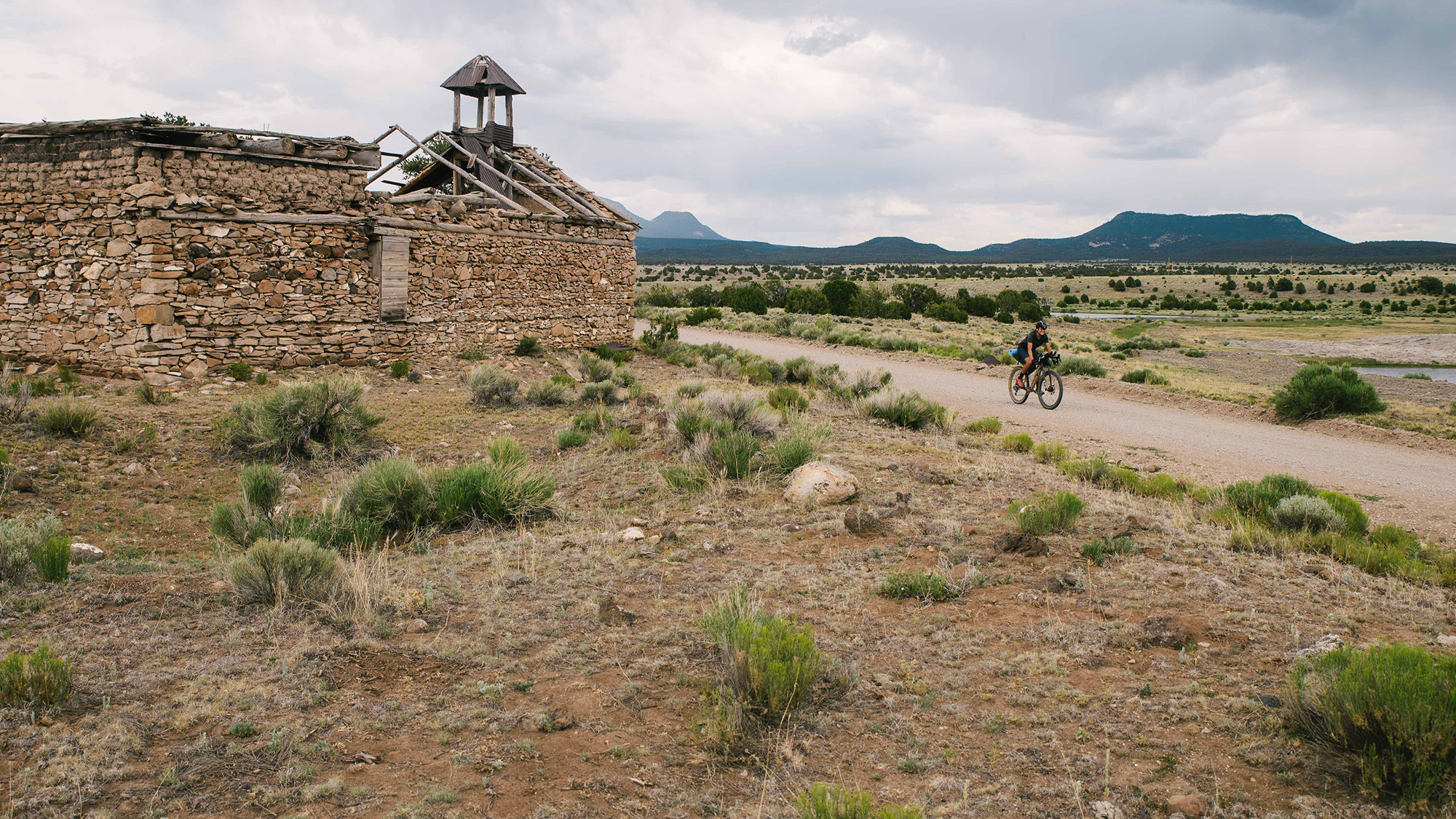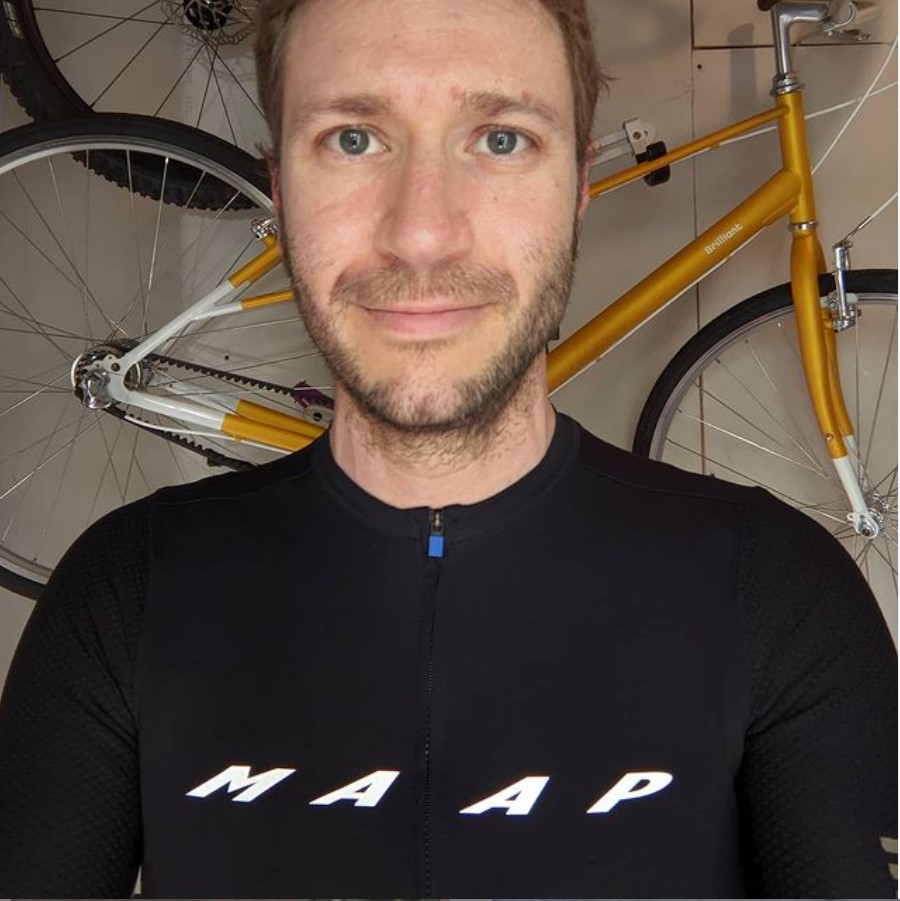Bikepacking in the USA – the appeal, the culture and the biggest routes
Why has bikepacking become such a large part of contemporary USA cycling culture?

Did bikepacking officially start in the USA? It's an easy claim to make but impossible to verify. Bikepacking, as a discipline, represents many things to many people, and defining it would be to misunderstand the concept completely. Despite all the ambiguity though, it's pretty obvious that bikepacking enjoys a large community in the US and it's definitely one of the threads that weaves the US bike culture together.
Why is bikepacking so popular in the USA
The rise of bikepacking in the USA is the story of a few different intersecting cultures coming together which starts with gravel cycling. It was gravel cycling and the commercial appeal that brought about the popularization of bikepacking, despite it being around in some form or another decade before the gravel boom. Like it or not, a few pioneers doing something awesome doesn't necessarily start a movement.
So why is there such a widespread love for gravel cycling in the United States? A big part of it is the land available. There are huge swaths of land that are publicly managed and accessible. Bureau of Land Management, or BLM, and the US Forest Service together manage 19 percent of the land area in the US. Given how large the US actually is, that's a huge amount of land.
If you look at the numbers, the US is the fourth-largest country by area. The vast 3.8 million square miles that comprise the United States account for 6 percent of the land in the world. Out of that land, 19 percent is open to dispersed camping and biking with very little regulation.
Without going any farther into the topic, those numbers tell the story of why gravel cycling and, by extension, bikepacking is such a burgeoning concept in the US. All that BLM and USFS land have a lot of trails and gravel roads to spend time on. Many states have easy access to long miles of Forest Service roads with the possibility of camping where you want. Those lands aren't the only wildernesses available either. There's plenty of land that is still accessible to bikes and bikepacking but carries with it tighter regulations and rules.
Another piece of the bikepacking puzzle is the popularity of bike touring in the US. That same huge landmass, and a lack of alternatives to the automobile, makes for a lot of miles of relatively low traffic roads. It's not hard to traverse the United States, in whatever direction sounds good to you, utilizing the vast network of paved roads.
It takes the third piece of the puzzle to really put everything together though - US car culture. The United States is a country dominated by the car. Portland Oregon is consistently named as one of the most bike-friendly cities in the United States. This bike utopia enjoys the highest percentage of bike commuters for a large American city. That means as of 2017, 6.3 percent of Portland commuters go by bike. If that seems shockingly low, it is. Nationally the number is only 0.5 percent.
What all this means is that you've got a country where people love to bike long distances. As with all countries, the population is growing and lonely country roads are harder to find. There's not much appetite for bike infrastructure in a country dominated by car culture but, in America, there is an alternative. As gravel bikes came on the market people took their cycling away from the car culture and the hustle and bustle of heavily congested city centers. Instead of fighting for access, Americans turned to the roads and trails where cars aren't an issue. Turns out we have a lot of those roads.
Once people had places to go and the bikes to take them it only made sense to do it for longer. Touring bike setups don't really work on gravel roads and trails. The people racing and pushing the envelope started building the right tools for the job. Bikepacking bags became popular and the stage was set for bikepacking in the USA.
The best places for bikepacking in the USA
Now that you've got an idea about why bikepacking is such a huge hit in the USA perhaps you'd like to be a part of it? There are options in every corner of every state. Anywhere you find yourself all you have to do is load up your bike with the best bikepacking bags and head out your front door. You can go for a night or you can go for six months. You can race it or you can take your time.
As mentioned above the United States is a huge country and bikepacking routes are plentiful. In the Pacific Northwest there is a temperate rainforest. In the Southwest you can find high and low deserts. Between the Mississippi River and the Rocky Mountains, the Midwest, you can find the wide-open expanses of the Great Plains. Keep heading East and the geography is vastly different depending on how far North or South you are.
There's no good way to sum up the bikepacking opportunities across a country that huge. Any attempt to highlight individual routes is going to be a game of picking favorites that excludes more than it includes. With that in mind, what about routes that cover the entire country? There's nothing more aspirational than the idea of leaving everything and heading out on your bike for an indefinite amount of time.
Here are four routes that traverse the United States in different ways. We've also got a comprehensive guide dedicated to 10 of the best USA bikepacking routes. There are numerous stories of how life-changing an undertaking like this is. Of course, not everyone can actually take the time to embark on something like that. You could enjoy the big dream by diving deep into the stories of who's been able to make these routes happen. That might be plenty for you. If you want to take it a step farther remember that there's nothing keeping you from tackling small pieces of the larger routes.
The Great Divide Mountain Bike Route
This 3,083-mile route is the most well-known on this list. It's been around since the late 90s and it's home to the well-known Tour Divide Race. If you spend much time in the ultra-endurance cycling world you are bound to come across Lael Wilcox. Her celebrity status has helped to shine a light on the route but the race, and the route, is bigger than any one person at one point in time.
The basic concept is to ride from Canada to Mexico following the continental divide. Although the route starts in Canada the vast majority of the riding time will mean traversing the US. The endpoint is the Southern border of New Mexico.
Unpaved roads make up the bulk of the route. County, Forest Service, Bureau of Land Management (BLM), and Canadian provincial roads combine for just under 70 percent of the route. About 2 percent is single track and for the remainder, you'll be on paved roads.
Find out more about the Great Divide Mountain Bike Route.
The Western Wildlands Route
It might be strange to talk about a route across a country being too busy but for some people that's a legitimate concern. The status of The Great Divide Mountain Bike Route means that there's a degree of popularity. If that's something on your mind the Western Wildlands route is another option.
The 2,700-mile route is to the west of The Great Divide Mountain Bike Route. It's a relatively new route developed by the non-profit Bikepacking Roots and finished in 2019. The path covers a steeper, slower, more rugged route than The Great Divide Mountain Bike Route traversing the US from Montana to Arizona. Resupply points are farther and fewer apart and more of the route is off-road.
Find out more about the Western Wildlands Route.
The Eastern Divide Route
If you still feel like an established route isn't enough adventure for your liking then maybe be a part of history. Every route that exists gets built on the shoulders of those who are willing, and able, to venture out with only a rough idea of where they are going.
Plotting a route across a country isn't like finding the best route to work. The time, money, and a dependence on luck means no one can cover a route over and over to optimize it. It takes the cooperation of many people, over many years, to establish a route.
If you like the idea of being a part of the history of a sport then there is still an opportunity out there. You don't have to be the fastest or the fittest. All you have to be able to do is cover the miles and see what happens.
The vast majority of available public land in the USA is in the West. There's no current North South bikepacking route across the US in the East. If you want to help, make it happen then you can work on the 5,500 mile route from Newfoundland, Canada, to Key West, Florida.
Get more info on the Eastern Divide Route.
The Dirt Road Trans America Trail
There are options that take you from well-known, and often raced, to so underground it's not yet a thing. You can ride in the west, or the east of the US and cover everything from Canada to Mexico. Some people don't mind seeing people along the way though, and they'd rather cover the country the long way. If you like the idea of riding from the Atlantic to the Pacific then there's one relatively unknown, to cyclists, option.
The best-known bicycle routes across the width of the USA are road routes. The Trans America Dirt Road Trail is also mostly roads, just unpaved roads. The route wasn't developed for cyclists and it's not well known in the community. It's a route for motorized off-road enthusiasts but there's nothing keeping a bike from following it. In 2015 Sara and Tom Swallow experienced it for the rest of us. The route covers 5,273 miles, 349,101 feet of climbing, and it's 80% dirt roads.
The Swallow's made some revisions with bikes in mind and since then there have been some revisions added by others. It's not going to be as empty as other options but that's part of the experience. Off-road vehicles aren't exactly racing down a highway but there will be people who will be a part of your experience.
More on the Dirt Road Trans America Trail.
Josh Ross was our US tech writer. He's most happy when talking about the finer details of how bicycle parts and components work, and enjoys putting his thoughts to words. He is a road cyclist at heart but can often be found taking the gravel road less traveled. Although he rarely races these days, he still enjoys a good Zwift session and race but will always choose the real world over pixels. Height: 5'9" Weight: 137 lb.

